How to Castrate Livestock Safely (With Healing Photos & Tips)
Castrating Livestock Safely: Step‑by‑Step Guide + Healing Progress Photos
This post may include affiliate links that earn us a small commission from your purchases at no extra cost to you. See our Privacy and Disclosure Policy for more.
Castration is a critical but daunting task for any small-holder. Here’s exactly how we do it—believing safety and animal welfare should never be optional.
When it comes to properly stewarding your animals, sometimes we need to castrate a male animal. And it’s an unenjoyable task for everyone involved.
After much research, we determined using the California bander was the best way to handle our male goats. We’ve included our experience with the bander along with healing progress pictures to provide insight into the process.
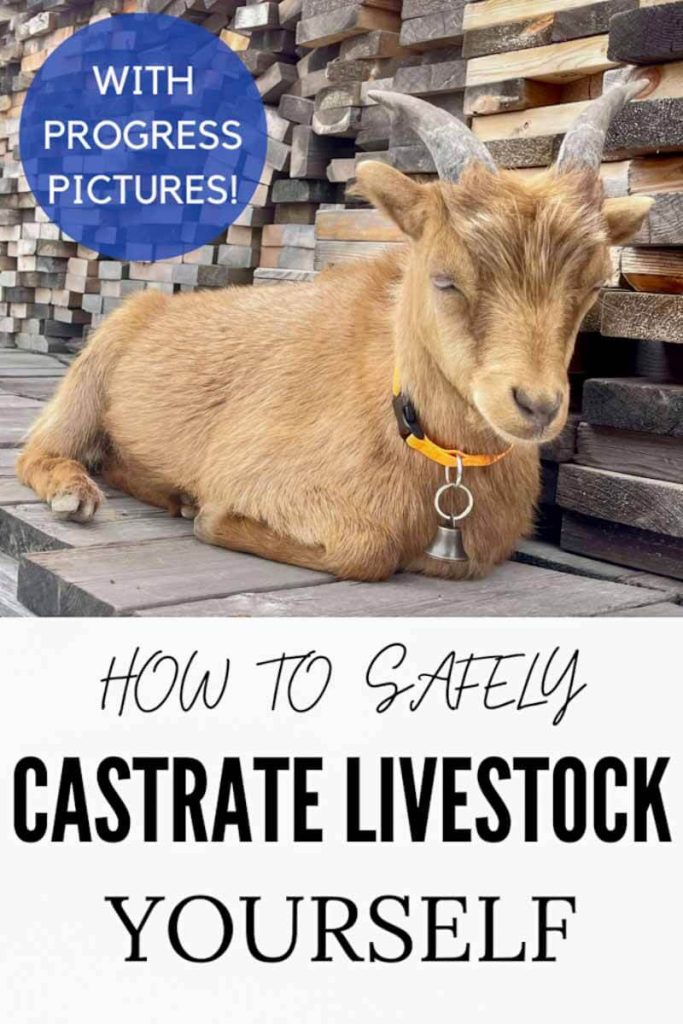
Reasons to castrate your male goat/sheep/cattle…
There are many reasons for castrating male livestock. Here are a few below to consider.
- To prevent the continuation of undesirable heritable traits
- To allow multiple males to live together peaceably (fighting to the point of permanent injury or death is possible)
- To deter unwanted behavior in sexually mature males (bucks pee on their beards to attract does)
- To prevent unwanted pregnancies in female livestock (wethers can be kept for their wool production year over year but not as a buck or ram)
- To provide better tasting meat (some say the decrease in testosterone creates a better flavor)
So your ram, buck, or bull needs castrating. Now what?
Choose your castration method
Unfortunately there are no completely painless methods of castration. But pain and discomfort can be minimized.
Below are the most common ways of castrating livestock.
Surgical
Typically this involves a veterinarian conducting a farm visit and slicing the scrotum open with a blade to remove the testicles. This is not considered a bloodless method of castration.
Pros:
- Done by a veterinarian (although some experienced handlers can tackle this too)
- Effective immediately because the testicles are physically removed
Cons:
- Creates an open wound which could lead to infection or fly strike
- Longer recovery time than a bloodless castration method
- Expensive when done by a veterinarian
Did you know?
Goats under anesthesia have a 7.3% mortality rate.
Laying on their sides during surgery increases their risk of death. Because of their digestive system setup with a rumen, they aren’t able to “burp” as effectively on their side which could press against their lungs and decrease their capacity to breathe. Source
Emasculator
Considered a bloodless method of castration when using a tool like a Burdizzo. A clamp crushes the spermatic cords from the body to the scrotum effectively cutting off blood to the testicles. The testicles are then reabsorbed by the body.
Pros:
- A bloodless procedure that doesn’t require an open wound
- Can be done at home without a veterinarian
Cons:
- Not as effective as surgical castration because, if not done correctly, the cords aren’t crushed completely
- Sometimes the spermatic cords will roll out of the clamp and require multiple crushings – ouch!
- Time consuming with large herds or flocks
Banding
The most common method of at-home castration. A tight band is placed around the scrotum (underneath the teats) until it dies and falls off.
Pros
- Can be done at home without a veterinarian
- Doesn’t require much skill beyond placing it correctly
- Inexpensive especially with large herds
Cons
- Takes a good bit of time for the scrotum to fall off
- Can be time-consuming if the herd or flock is large
We chose the banding method for our male livestock. Why?
- We weren’t going to risk the health of our animals with an open wound or under anesthesia
- It’s an inexpensive method and no more painful than any other method
- For newbies, a bander is the easiest method to do correctly
Our castration method
We use the California bander for multiple reasons.
- Easier to use on older animals with larger testicles (we castrate at older ages than typical)
- Easier to use on any animal in almost any position since the band circle is created by the user rather than already existing as a circle
- We watched a very convincing YouTube video on the California bander
What age to castrate?
While your situation dictates when the best time is to castrate, it’s extremely important for young male livestock to have their testicles and the associated testosterone for as long as possible. This allows their urinary tract to grow properly to prevent the risk of issues like urinary calculi later in life.
Overall an animal should be able to develop with the proper hormones for as long as possible to allow them a long and healthy life.
Some castrate 2 weeks after birth but the typical recommendation is at 12 weeks.
We choose to castrate no younger than 4 months but have castrated at 6 months as well. We prefer to allow male livestock to keep their testicles as long as possible dependent on their situation (behavior, sexually mature females around, going to a new home, etc.).
How to castrate a ram/buck/bull using the California bander
The best advice is high and tight. The band should be above both testicles, but below the teats, and very tight to make sure all blood flow is stopped.
Double check to make sure you DO NOT include the teats in the band. This will cause extreme pain to your animal and senseless injury.
Also double check to make sure both testicles are included below the band otherwise this castration method will not work.
We soak our bands in vinegar for 24 hours prior to banding to disinfect them. Every few days we spray antiseptic spray on the scrotum area to prevent infection or fly strike. We have had no issues with this castration method.
Keep eyes on the area daily to make sure you can intervene if things go south.
Supplies needed for a successful banding:
- California bander
- Bands
- An extra set of hands to hold the goat
- Some treats like black oil sunflower seeds
- Optional: pain medication and tetanus vaccine
Pain management
Consider vet‑approved pain relief where legal/available.
Administering anti-inflammatory medications such as Banamine or lidocaine to numb the area can ease the pain associated with banding. Additionally, some goat owners use herbal remedies like willow bark tincture for pain relief.
It is also advised to give a dose of tetanus antitoxin at the time of castration to prevent infection.
We do not administer pain medication or the tetanus vaccine.
What does the animal experience?
Again, there is no pain-free method of castration.
With banding cutting off blood supply, liken it to having a string wrapped around your finger tightly. It will tingle and be uncomfortable until you lose feeling.
That’s how it most likely feels for your livestock. It’s uncomfortable for a few hours to a day or so and then they act like nothing is wrong. That’s exactly how it goes for our bucklings.
Your animal will probably mope around for a bit and lay down more often. Just make sure no other animals are harassing him until this period passes.
We find that the scrotum swells for a few days and then starts to shrivel up.
How does this grow sovereignty?
Being able to research about and take care of your animals that take care of you is important and fulfilling.
Veterinarians are not always available for all types of livestock or even at all in some areas. Full responsibility for our animal’s well-being resides with us so we must be educated, safe, and thorough.
How long should the whole process take?
The actual banding takes less than 30 seconds.
At two weeks blood flow stops and the scrotum is shriveled. At this point, we cut the scrotum off to prevent it from catching on something.
Boy, does it smell! Antiseptic spray comes in handy for our peace of mind and health of the animal.
While cutting the scrotum off, our goats are completely unbothered because the flesh is dead with no nerve endings to signal pain.
If left alone, the scrotum should fall off sometime in the two months following banding. The band itself should also fall off within two months.
Good luck finding those jewel bags once they fall because they tend to blend in with the ground. If you have a dog, they’ll definitely find a new treat.
Choose your Facebook groups carefully
Funny story break.
Many livestock groups on Facebook are super helpful. I’ve learned so much just from reading other people’s posts about their animals and the different ways to care for them.
But not all groups are for truly raising and stewarding animals. It’s great to go to these groups for advice and help but always be wary of what you’re reading.
Research and research and research!
Choosing the right path forward always comes back to what is best for the animal entrusted to our care.
When I banded my first buckling, I snapped a picture of the scrotum and posted it to two groups to ask for feedback on placement. Oh man, I got some nasty replies in one group from goat lovers who apparently never had bucklings that shouldn’t be sold as breeding stock.
And when I say some replies, I mean HUNDREDS of replies ranging from “you’re a monster” to “good placement, nice job!”.
The other group, a more livestock and homesteading oriented group, gave great feedback.
Lesson learned.
Keep in touch with our twice a month newsletter.
never spammy, sometimes helpful,
always entertaining
Progress pictures
While pictures are spaced apart, we checked this buckling daily to make sure he was eating, drinking, and acting normally. We also made sure to check his band to ensure no infection was evident.
Forgive some of the blurry and off-center pictures. It can be difficult to have an affectionate goat stand still for pictures when he just wants to chew on your hair.


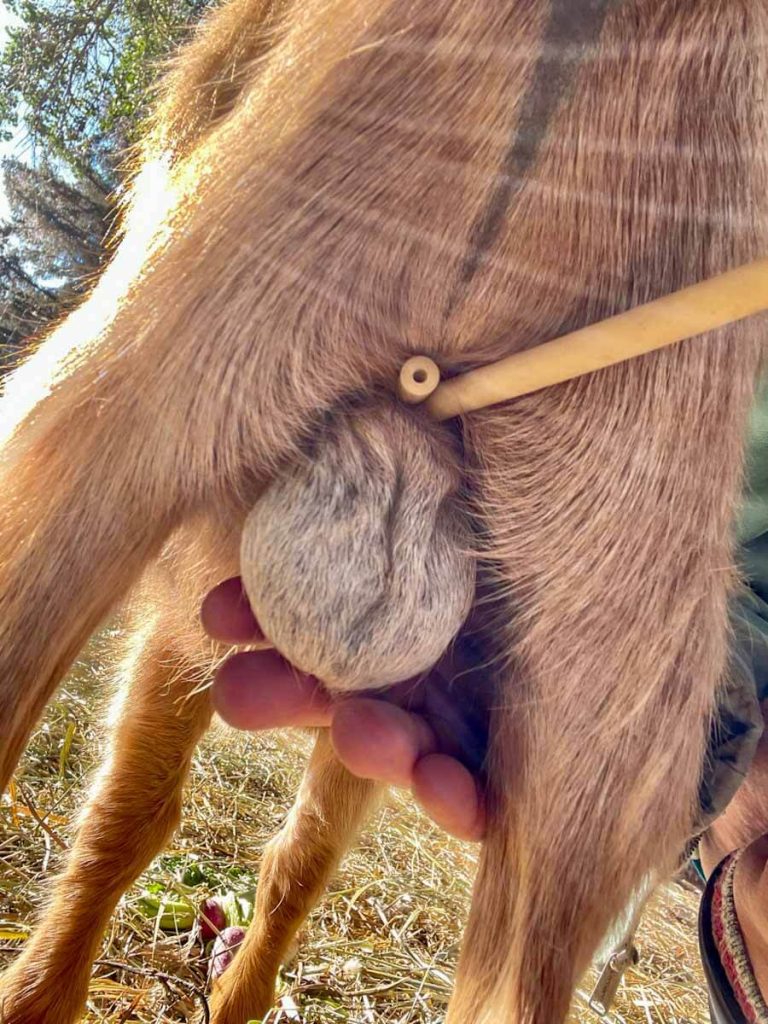
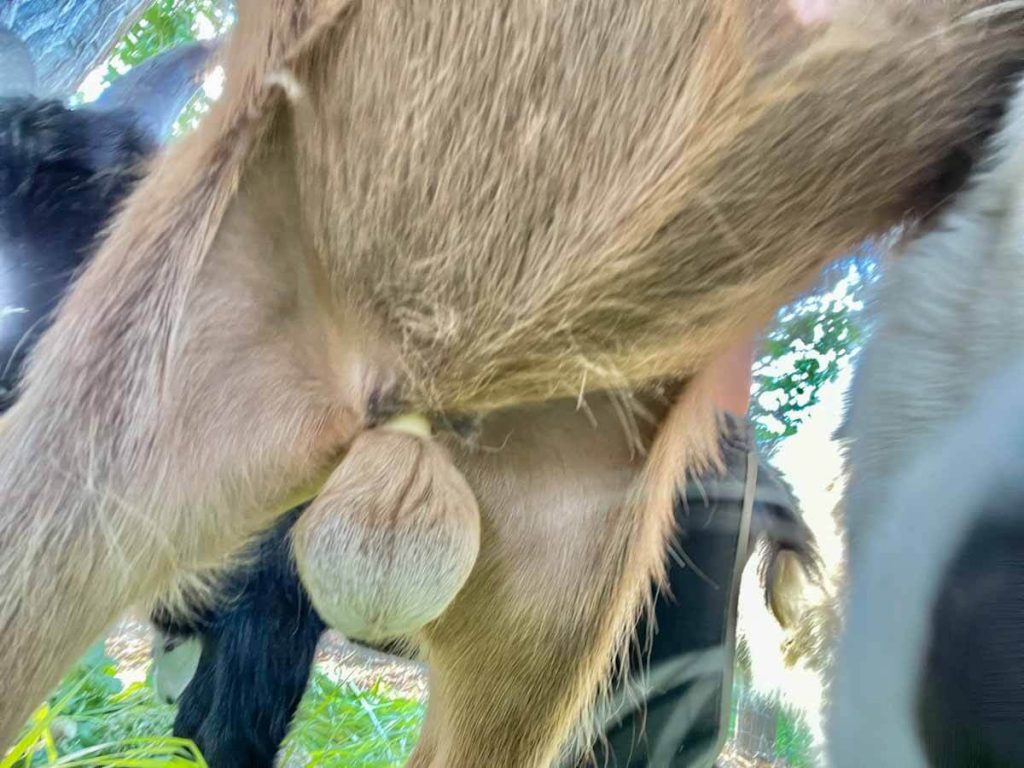
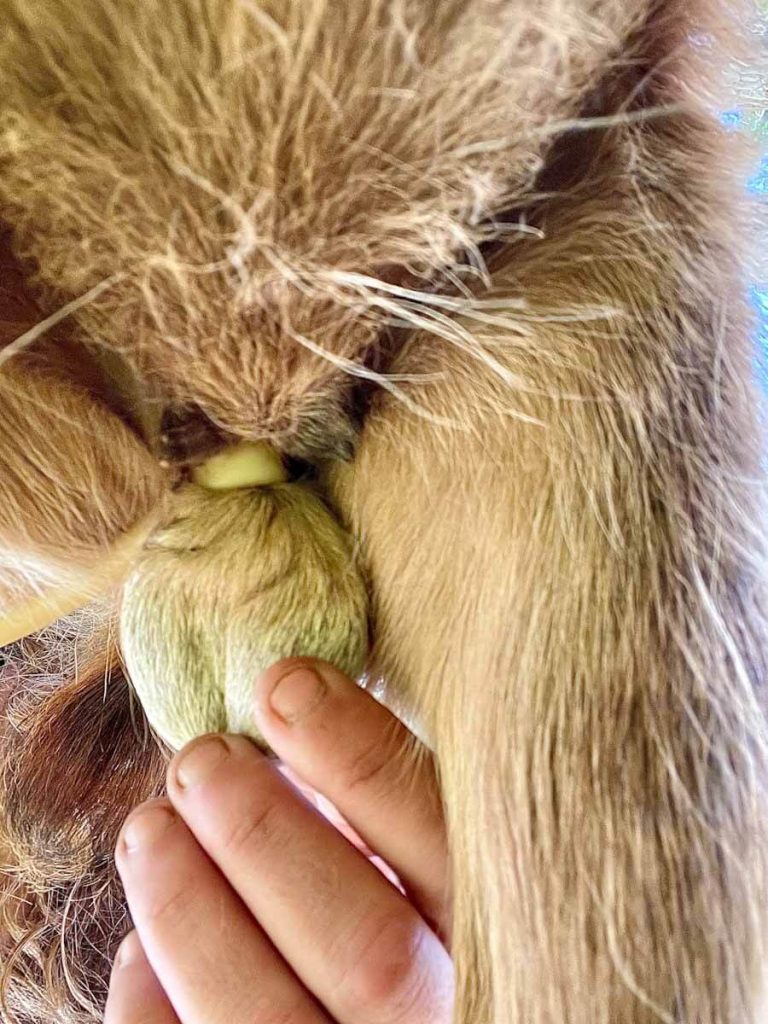



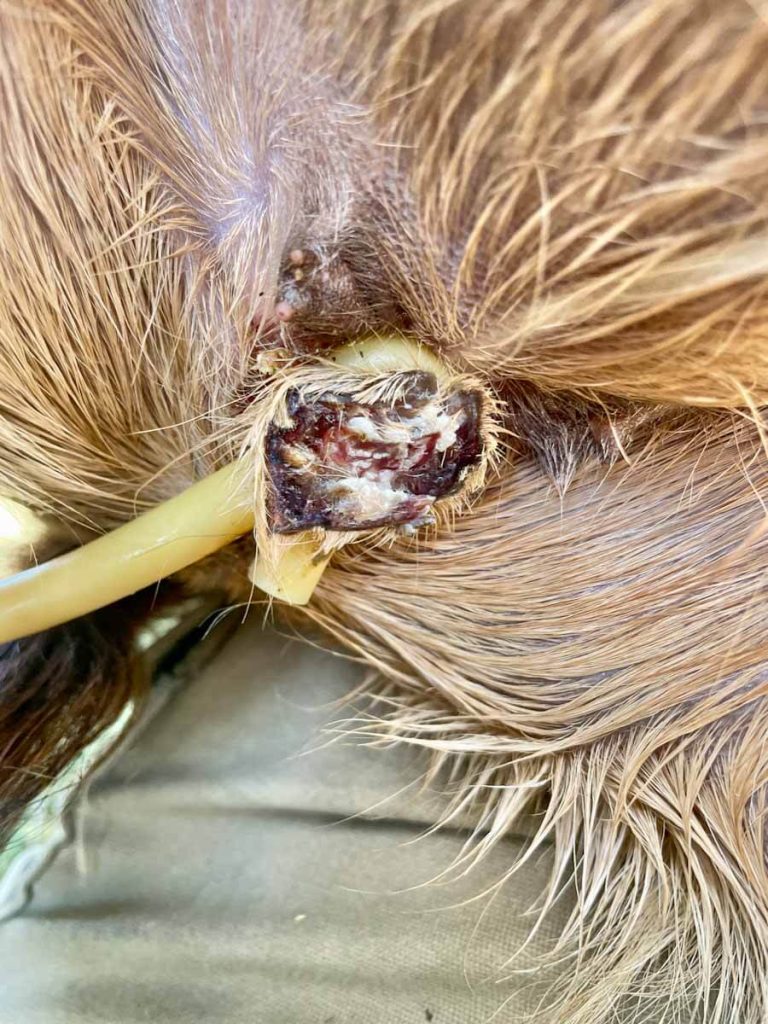

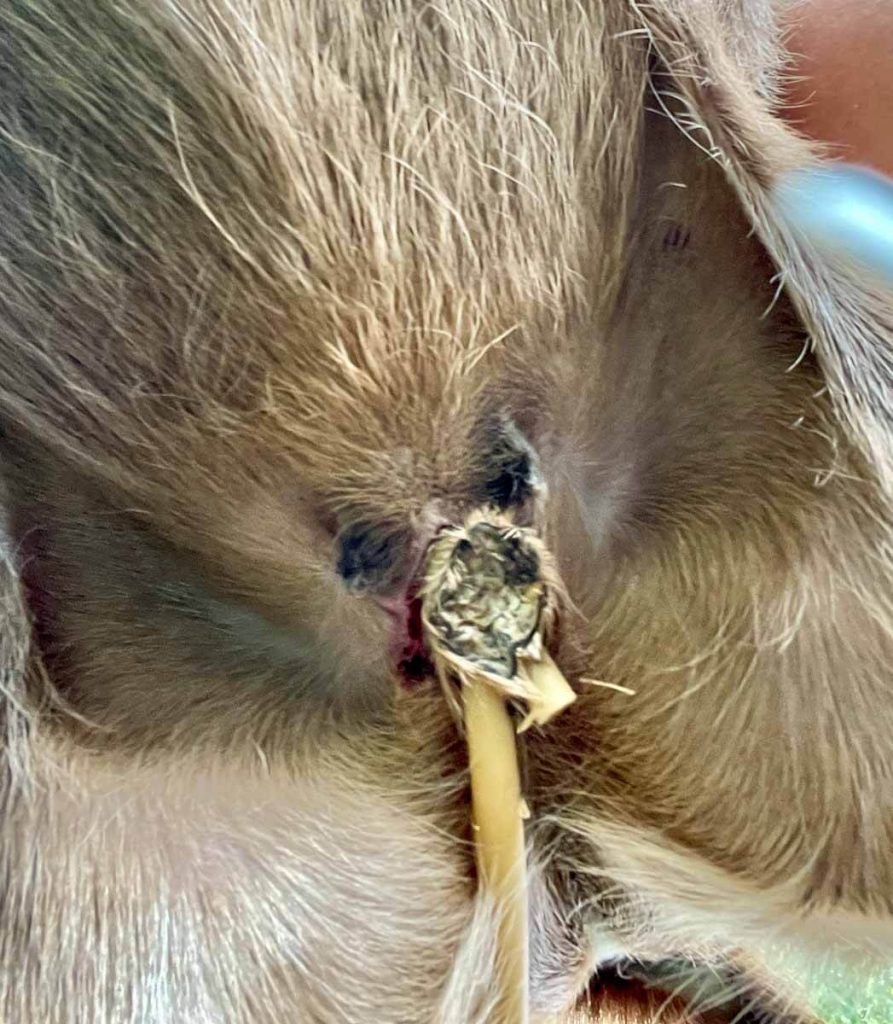



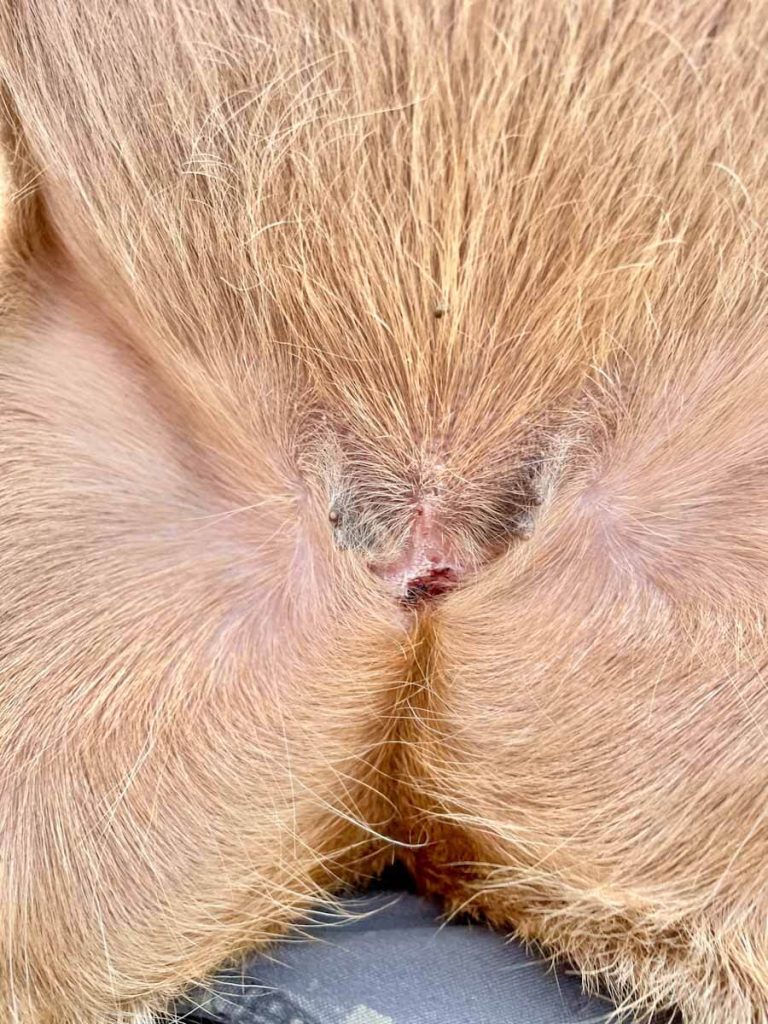
Summing it up
No pain-free castration exists but, in our opinion, banding is the best option for homesteaders. It’s inexpensive, requires no technical skills, and the animal is back to normal within a few hours.
The California bander is really a fantastic option for any animal age and any level of experience with banding.
As unsettling as some of the pictures can be, I hope to give assurance to you as you make the decision to castrate your animal by viewing a healthy and natural process.
FAQ
Q: Which method hurts less?
A: Every method will hurt to some extent. Banding often causes less acute pain but more prolonged discomfort; surgery has more initial pain but quicker recovery. Surgery however brings the risk of death under anesthesia, higher cost, and higher risk of infection due to a larger open wound.
Q: When is the best age to castrate?
A: My opinion differs from the majority opinion. We wait until at least four months of age to give the body time to grow out that urinary tract as much as possible to prevent urinary calculi later on in life. Many people will castrate at 12 weeks.
Q: Can I use pain medication?
A: Yes, work with your veterinarian regarding type and dosing. Avoid administering OTC human medication at the risk of over medication leading to death.

I started castration on my six year old and two year old male goats about 10 days ago. I used a California band method. There testicles are still very enlarged. Is that normal? I’m concerned it’s not on tight enough to cut off full circulation and I’ve done something wrong. Also, they’re both still very sexually interested in the females. Again, is that normal?
In my experience, the testicles do swell prior to shrinking. Castrating older bucks can be tougher with this method due to the size and increased pain. It may not always be as effective and safe as with younger bucks. However, judge by how they’re acting. At 10 days they should definitely be acting like themselves again. If not, reach out to a vet. Since they’ve not been without testosterone long, they’ll still be very much so interested in females. Especially in older bucks, that behavior may never fully go away, but any behaviors should be at least lessened or fully disappear (hopefully peeing on their face disappears). It can be nerve-wracking the first go around!